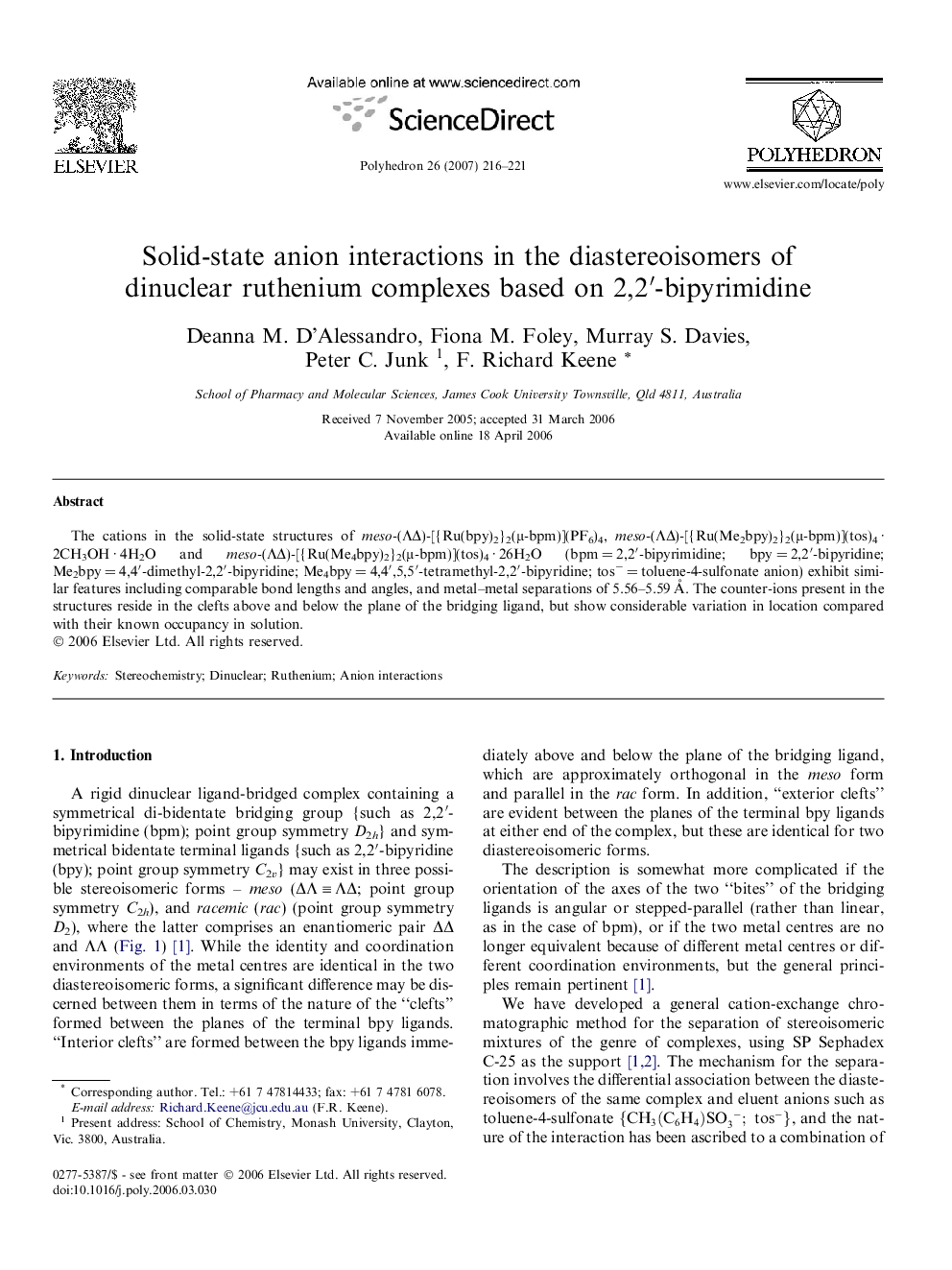| Article ID | Journal | Published Year | Pages | File Type |
|---|---|---|---|---|
| 1338843 | Polyhedron | 2007 | 6 Pages |
The cations in the solid-state structures of meso-(ΛΔ)-[{Ru(bpy)2}2(μ-bpm)](PF6)4, meso-(ΛΔ)-[{Ru(Me2bpy)2}2(μ-bpm)](tos)4 · 2CH3OH · 4H2O and meso-(ΛΔ)-[{Ru(Me4bpy)2}2(μ-bpm)](tos)4 · 26H2O (bpm = 2,2′-bipyrimidine; bpy = 2,2′-bipyridine; Me2bpy = 4,4′-dimethyl-2,2′-bipyridine; Me4bpy = 4,4′,5,5′-tetramethyl-2,2′-bipyridine; tos− = toluene-4-sulfonate anion) exhibit similar features including comparable bond lengths and angles, and metal–metal separations of 5.56–5.59 Å. The counter-ions present in the structures reside in the clefts above and below the plane of the bridging ligand, but show considerable variation in location compared with their known occupancy in solution.
Graphical abstractThe counter-ions present in the solid-state structures of meso-(ΛΔ)-[{Ru(bpy)2}2(μ-bpm)](PF6)4, meso-(ΛΔ)-[{Ru(Me2bpy)2}2(μ-bpm)](tos)4 · 2CH3OH · 4H2O and meso-(ΛΔ)-[{Ru(Me4bpy)2}2(μ-bpm)](tos)4 · 26H2O (shown) reside in the clefts above and below the plane of the bridging ligand, but show considerable variation in location compared with their known occupancy in solution.Figure optionsDownload full-size imageDownload as PowerPoint slide
